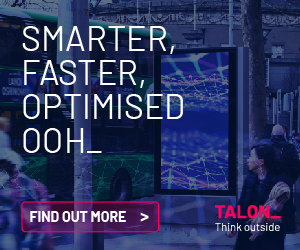
It’s been a long time coming but next year Google will finally phase out third party cookies on its Chrome browser. But how will digital marketers cope with the new post-cookie world? David Fogarty, digital board director with Starcom, offers some guidance.
As we head for 2024, initial indications are that Google will finally phase out of third-party cookies across Google’s Chrome browser. After years of talking about it, Google will begin to disable third-party cookies for 1% of Chrome users, migrating these users to their Privacy Sandbox initiative, which has had its sceptics.
Google’s Chrome browser has a 55% market share of all online web browsing in Ireland.
By the end of 2024, Google’s plan is to fully remove third-party cookies will be complete; or that is what they are saying right now. As the deadline looms, its looking increasingly important that advertisers have a plan to navigate this post-cookie world, otherwise both targeting and reporting of their digital advertising campaigns, could become obsolete.

Remind me, what are third-party cookies?
Cookies are the bits of code that are stored by websites in people’s browsers to track browsing activity.
Originally designed way back in 1994 for websites to remember a user’s browsing history, they later allowed marketers to tailor ads and target people online according to their behaviours. Known as third-party cookies, they were created to track users across multiple websites online.
These cookies also provide marketers a quick and simple way to attribute a consumer’s behaviour or exposure / association to their ads back to an action on their website. Such ease of reporting has been a major factor in the growth of digital ad spend.
Given the level of targeting and tracking that may be lost, how prepared are advertisers for this huge change?
According to last year’s WARC Marketers Toolkit, the number one planned approach for marketers to navigate a post-cookie world was ‘developing their first-party data pools’. This was followed by finding new ways to measure effectiveness of digital advertising, focusing on quality media and content, and looking to leaders (e.g., Google or Meta) for solutions (amongst other things).
Locally, most advertisers are still exploring first-party data from an advertising perspective. They are figuring out what they can and cannot do in this area, confirming if they have the right levels of consent, selecting a technology partner to navigate this new world, and finally, discovering if their data is segmented well enough to target customers more effectively.
If you’re in this position, know that you’re not alone.
What Are the Alternatives?
While first-party data is the obvious solution in a post-cookie world, scale is the biggest concern in a market of just over 5.5 million people, resulting in advertisers exploring other options.
Those alternative options include:
Second-party (or publisher first party) data: A method of leveraging audiences already built by publishers, based on known behaviours and interests demonstrated on their platforms.
AI-informed (or look-a-like) modelling: With all platforms moving to machine learning and modelling, look-a-like modelling allows first-party audiences to be expanded, providing a way to scale and find new customers who demonstrate similar behaviour and interests to existing customers.
Browser-based solutions (like Google Topics): Topics is a new proposal from Google as part of their Privacy Sandbox initiative, which assigns five topics (every week) to a person based on their browsing behaviour. 470 topics will be available for advertisers to target.
Contextual targeting: One of the oldest but most effective ways of targeting based on a person’s (content of) interest. Newer solutions in the space are now able to also factor in more than just keywords, by considering the overall sentiment of an article to prevent certain keywords being negatively targeted for the wrong reason.
Google, like the large tech companies, are well-placed in the post-cookie world. They all collect a vast amount of first-party data. This data is unaffected by the demise of third-party cookies and will enable them to sell advertising within their own tools, irrespective of what the market decides.
Finding new measures of effectiveness
In addition to targeting loss, measuring the effectiveness of digital advertising over that last 2-3 years has become increasingly difficult due to cookie deprecation on other non-Google browsers, mobile app tracking prevention and rising privacy concerns.
This has led to the emergence and demand for a more rounded measurement approach, which includes:
MMM (Market Mix Modelling): Statistical analysis which looks back at business sales over a period of time to determine marketing’s performance, and what exactly caused those sales. It also serves as a Predictive model to help marketers better allocate future budget.
Lift Experiments: Experiments help to alleviate potential imperfections in MMM estimates, and allow us to make decisions grounded in incrementality, measuring the true value of digital marketing campaigns.
Advanced Attribution: While questions on the accuracy of digital attribution models continue and how this approach often over-estimates short-term effects and ignores other media, it still has a role to play in helping make day-to-day decisions / optimisations based on quick and easily understood results.
While MMM gives marketers a holistic understanding of marketing performance, it should be ideally calibrated with Lift Experiments and Attribution to improve their accuracy.
Using a combination of these approaches will become the norm in 2024, rather than a nice to do.
What does this all mean for advertisers?
While there is no silver bullet to dealing with the many challenges digital marketing presents, the way in which we target and measure digital marketing it is fundamentally changing.
Advertisers who react quickest, not only stand to gain a competitive advantage but also transform how they reach customers online and measure how successful their campaigns perform.
The introduction of audience and measurement frameworks is a great starting point. If done correctly, they help to identify the right mix of targeting for your campaigns and decide on the best approaches to measure the effectiveness of your investment in digital.
They can also help to set clear goals on how you want to evolve and test your targeting and measurement in the future.
If you’re unsure, don’t worry, you’re not alone. At Core, we are more than happy to advise.
David Fogarty is Digital Board Director with Core




















